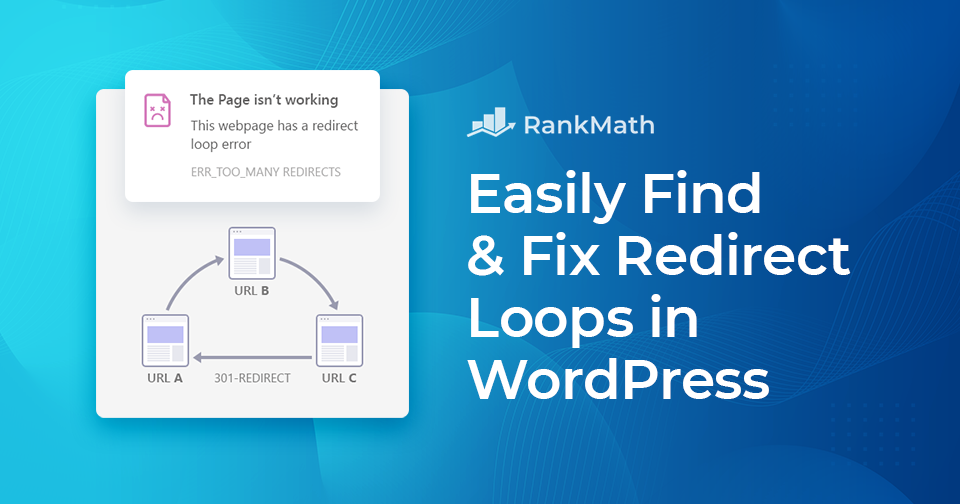You tried to open a page on your WordPress site, but instead of loading normally, you were greeted with an ERR_TOO_MANY_REDIRECTS message. So, what does this actually mean?
In simple terms, your website is stuck in a redirect loop, when one URL keeps redirecting to another and eventually circles back to the original. This endless chain of redirects prevents the page from ever loading.
If this sounds confusing, don’t worry, you’re not alone. The message often appears without much context, making it seem more serious than it actually is. The good news? You can usually fix it with just a few simple steps.
In this post, you’ll learn what causes redirect loops, why they happen, and how you can quickly resolve them to get your WordPress site back up and running smoothly.

So without further ado, let’s get started.
Table Of Contents
1 What Are Redirect Loops?
When a redirect chain is stuck redirecting to one of its elements, the ultimate URL never resolves, which is known as a redirect loop.
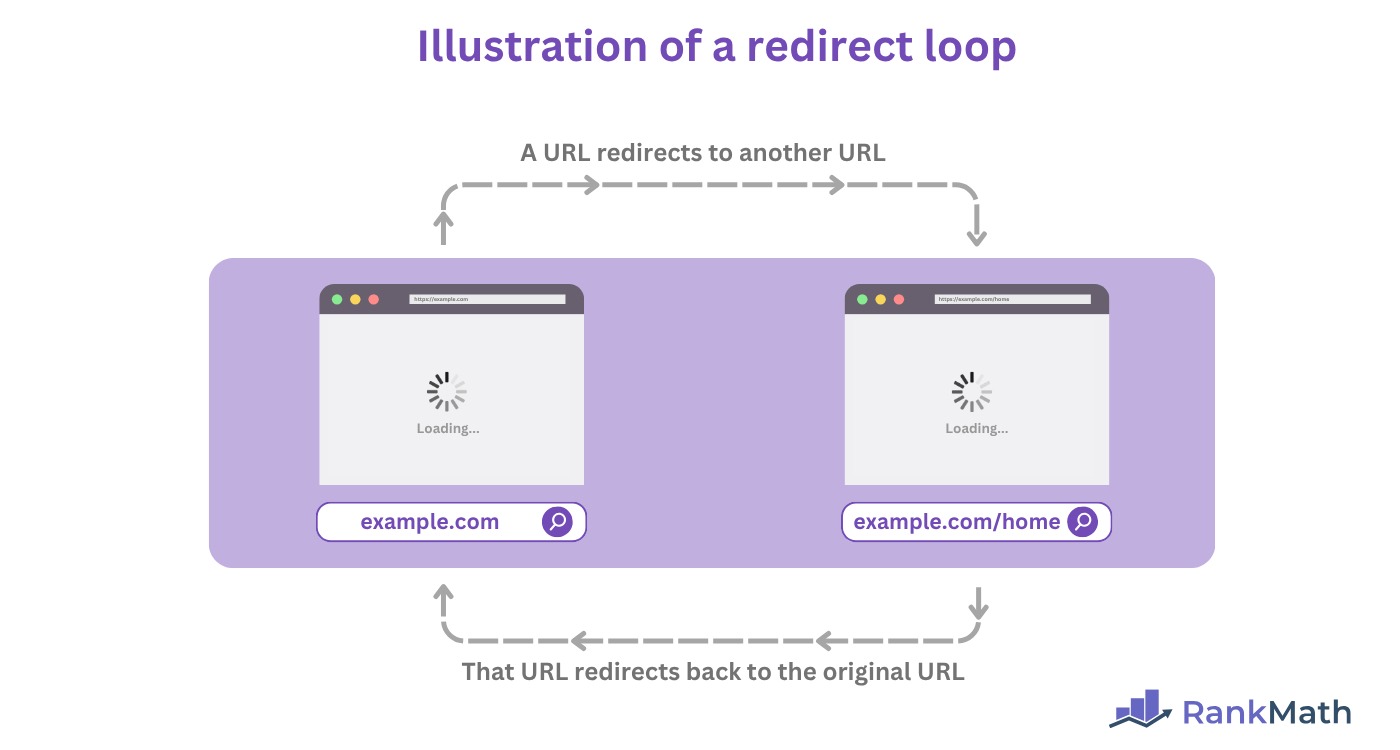
Examples of redirect loops:
URL X(301) → URL Y(301) → …
URL X(301) → URL Y(301) → URL Z(301) → URL X(301) …
If URL X has a 301 redirect to URL Y, URL Y 301 redirects to URL Z, and URL Z then redirects back to URL X, leads to a never-ending chain of redirects and thereby generates ERR_TOO_MANY_REDIRECTS in your browser.

2 What Triggers Redirect Loops?
You might be wondering why this error appeared in the first place, and how your site end up stuck in a redirect loop? Let’s break it down.
One of the most common causes is poor redirect configuration. This usually happens when your redirects aren’t properly aligned between different systems, such as your web server and your CMS’s redirect manager.
For example, imagine you have a redirect set up on your web server that sends visitors from URL X to URL Y. Later, you configure another redirect in your CMS that sends URL Y back to URL X. These two redirects now point to each other, creating an endless loop, and that’s when the ERR_TOO_MANY_REDIRECTS error appears.
If any of your redirect tools are misconfigured or overlapping, this issue is bound to happen.
Also, keep in mind that the error message might look different depending on your browser:
- Chrome: “This webpage has a redirect loop problem.”
- Firefox: “The page isn’t redirecting properly.”
Alternatively, here’s what the message looks like in Safari:
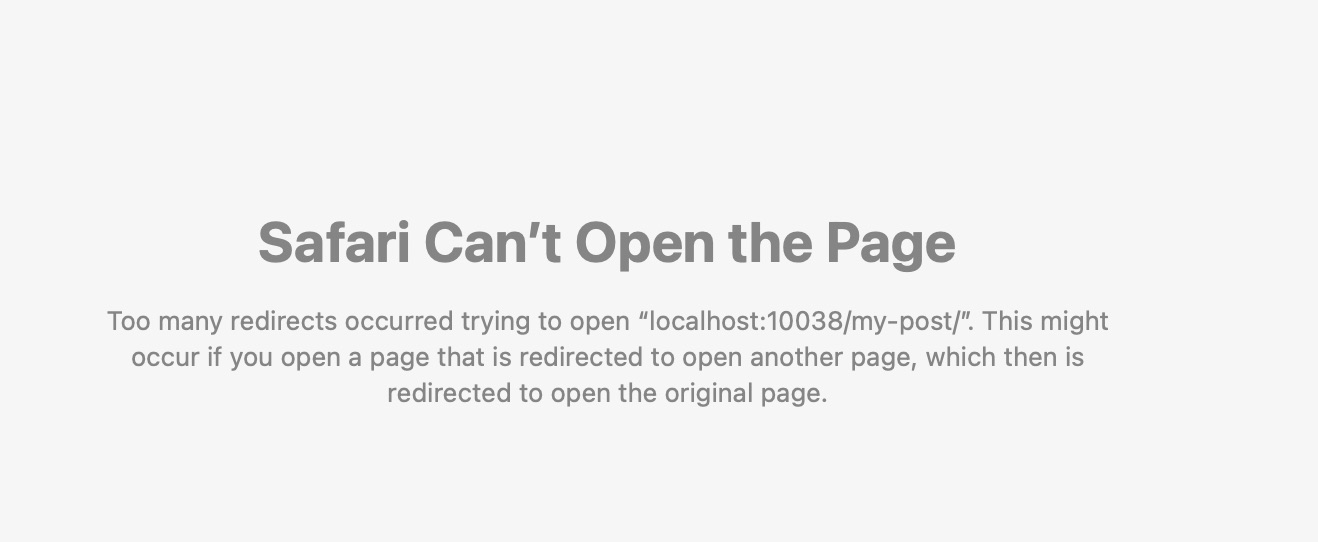
Regardless of how it’s displayed, the underlying issue is the same, and you can fix it using a few reliable troubleshooting steps.
3 Why Are Redirect Loops Bad for SEO?
When a redirect loop occurs, your browser gets stuck and displays an error instead of loading the page. This means visitors can’t access your content, and search engines face the same problem. Once they detect that your site is caught in a loop, they stop following the redirects and never reach the final page.
From an SEO perspective, that’s a big issue. Normally, redirects help pass important ranking signals, like link authority and relevance, from one URL to another. But in a redirect loop, that transfer never completes. The signals just keep bouncing back and forth, and your site loses valuable SEO strength.
Beyond that, redirect loops hurt your website’s usability and crawlability. Search engines waste crawl budget trying to process the loop, while visitors get frustrated and leave, both of which can negatively impact your rankings.
4 How to Find Redirect Loops
It’s easy to find these loops on your website. Rank Math plugin helps find the redirect loops with the Debug Redirections feature.
Once you’ve enabled the Redirections module, you can enable Debug Redirections by navigating to Rank Math SEO → General Settings → Redirections from your WordPress dashboard.
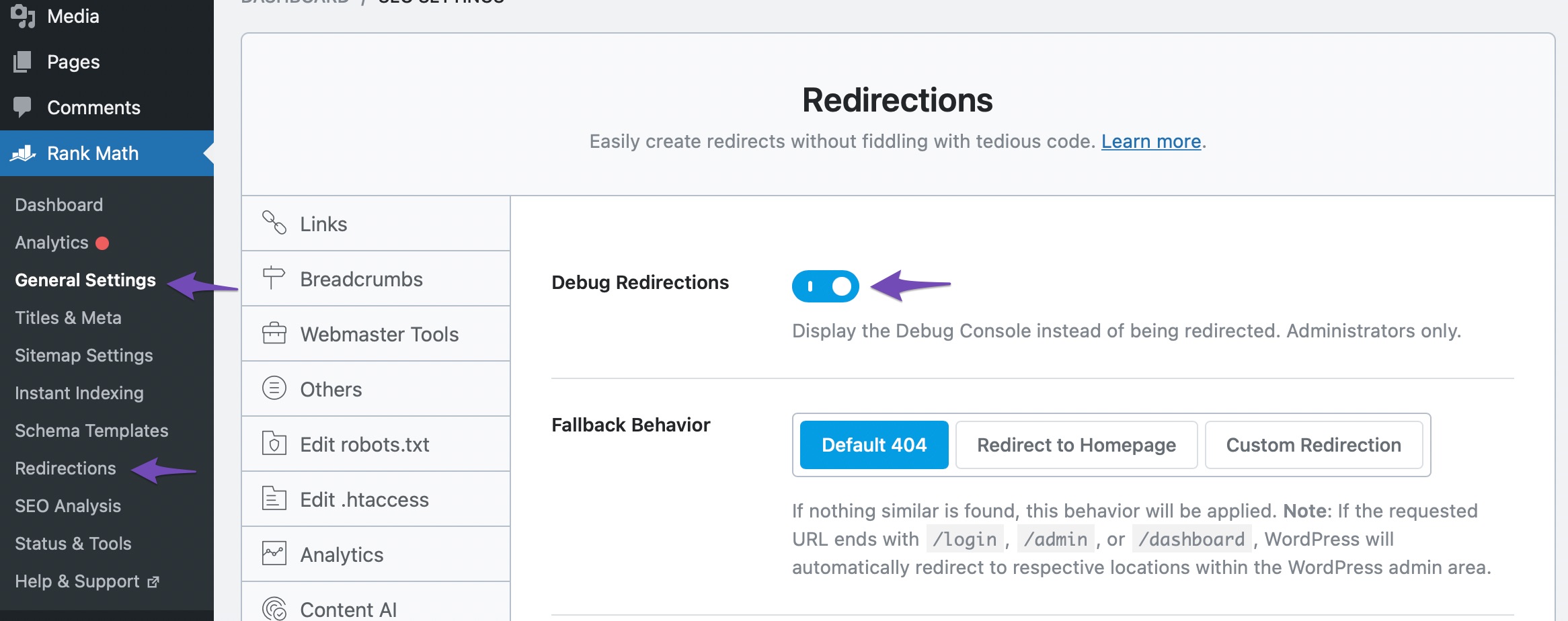
When you enable this feature and land upon a redirect loop, you can click the Manage Redirections button to reach the specific redirection that is set and causing the issue. Once done, save your changes.
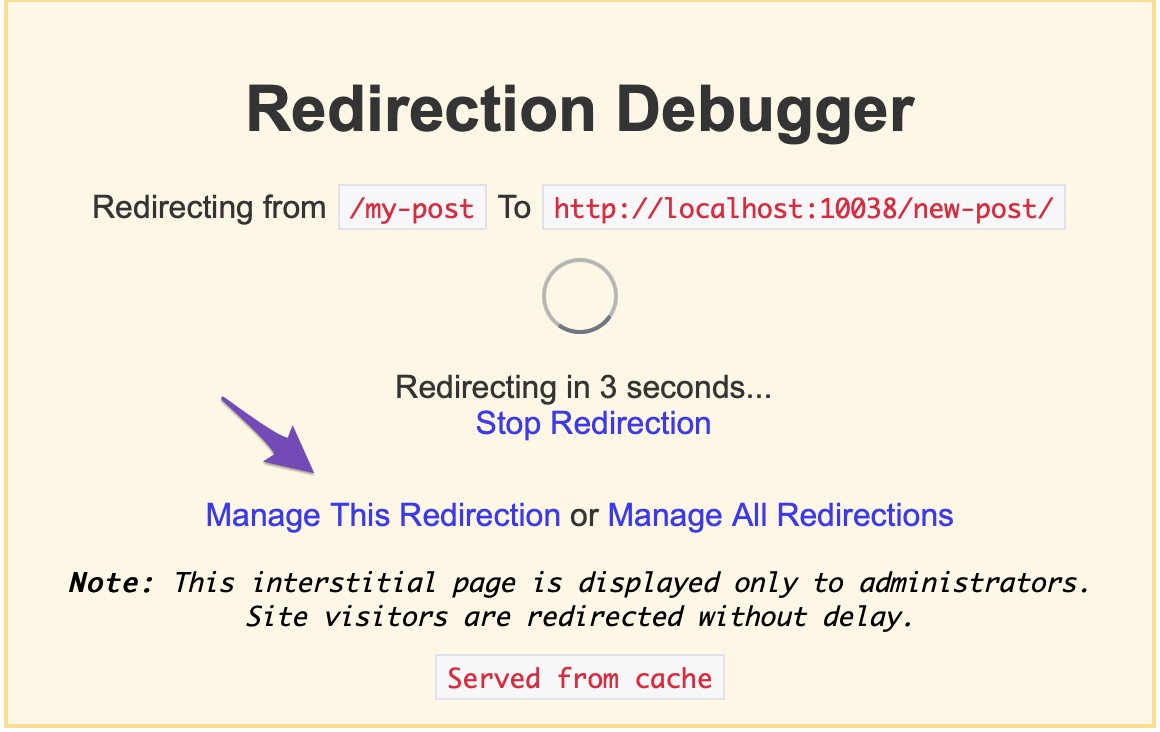
Another way to find redirect loops is to use the Redirect Path browser plugin. Look up that URL and check where it redirects to; this will show you where the redirect loop begins.
You can also use a redirect checker like SerpWox. Enter your URL, and the tool will check all versions of it for redirects. It will also provide a score that lets you know at a glance how many redirects are active for that URL.
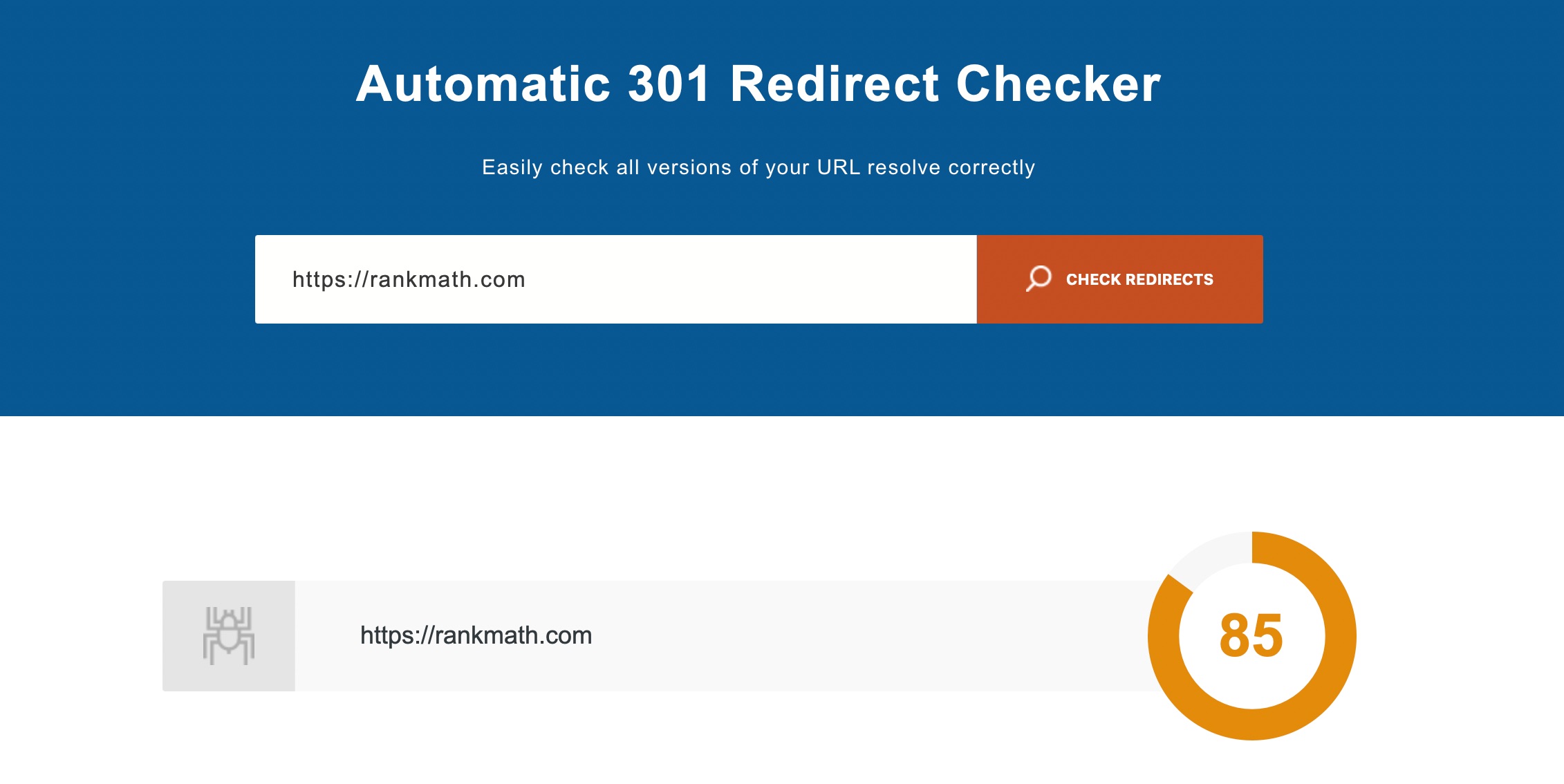
Note that the browser’s cache redirects aggressively, leading to false positives if your cache contains outdated redirects. When debugging redirect loops, always start by deleting your browser cache.
5 How to Fix Redirect Loops
If your site is currently showing a redirect error message, you’ll want to address it as soon as possible. However, you’ll first need to figure out where the problem is coming from.
So, if your site is experiencing a redirect error, here’s how to figure out what’s causing it and how to fix it.
5.1 Clear Your Browser Cookies
Cookies are a type of saved data that your browser utilizes to speed up the loading of websites. When a website fails to load properly, the first step in troubleshooting should be to clear your browser’s cookies.
Depending on whatever browser you’re using, this process will function differently. You can erase cookies in Google Chrome by going to History → Clear browsing data, as shown below.

Ensure the Cookies and other site data option is checked in the pop-up menu, then select Clear data. Once done, restart your browser and see if the website loads properly.
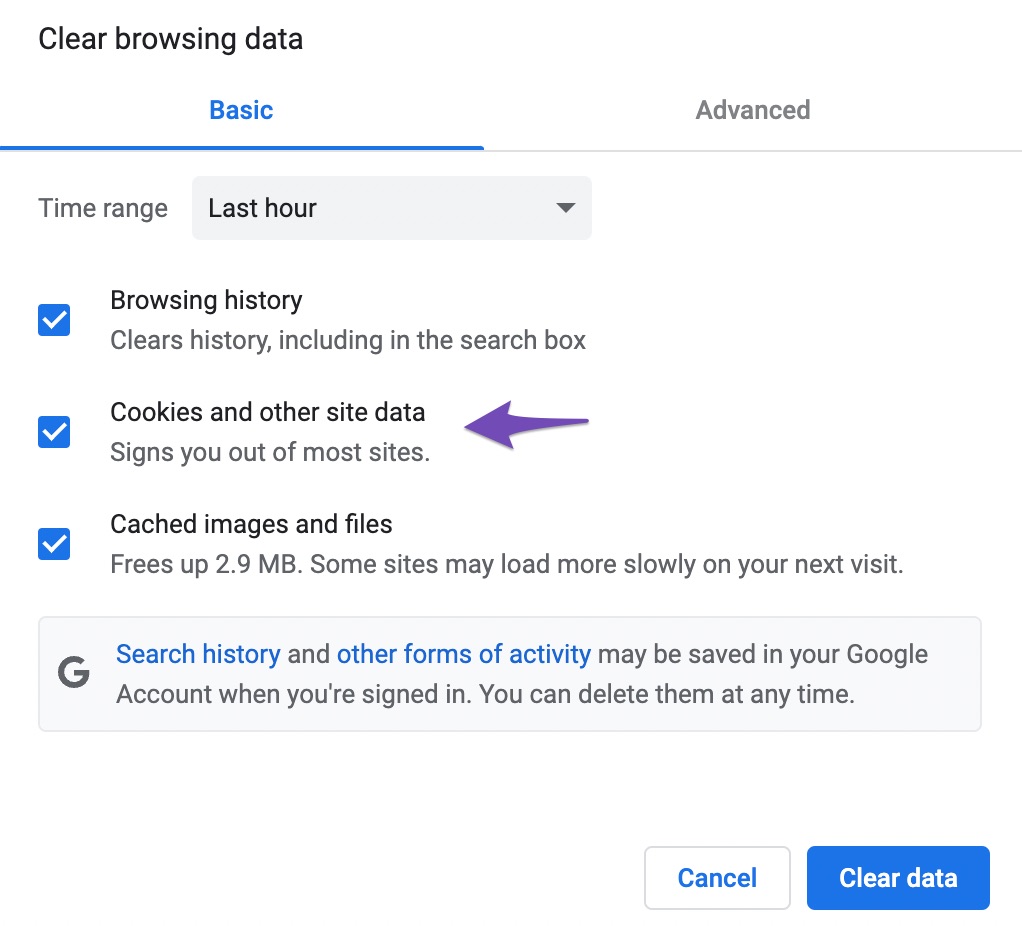
If cookies cause the problem, the page should now display as intended, and your problem should be resolved.
5.2 Clear Your WordPress Site Cache
If clearing your cookies doesn’t work, the next step is purging your WordPress cache. You may still be able to access your WordPress admin dashboard depending on the type of redirect loop. You may quickly erase the cache from your caching plugin’s settings in this scenario.
For instance, if you’re using W3 Total Cache, navigate to the Performance tab in the admin toolbar and click on Purge All Caches, as shown below.
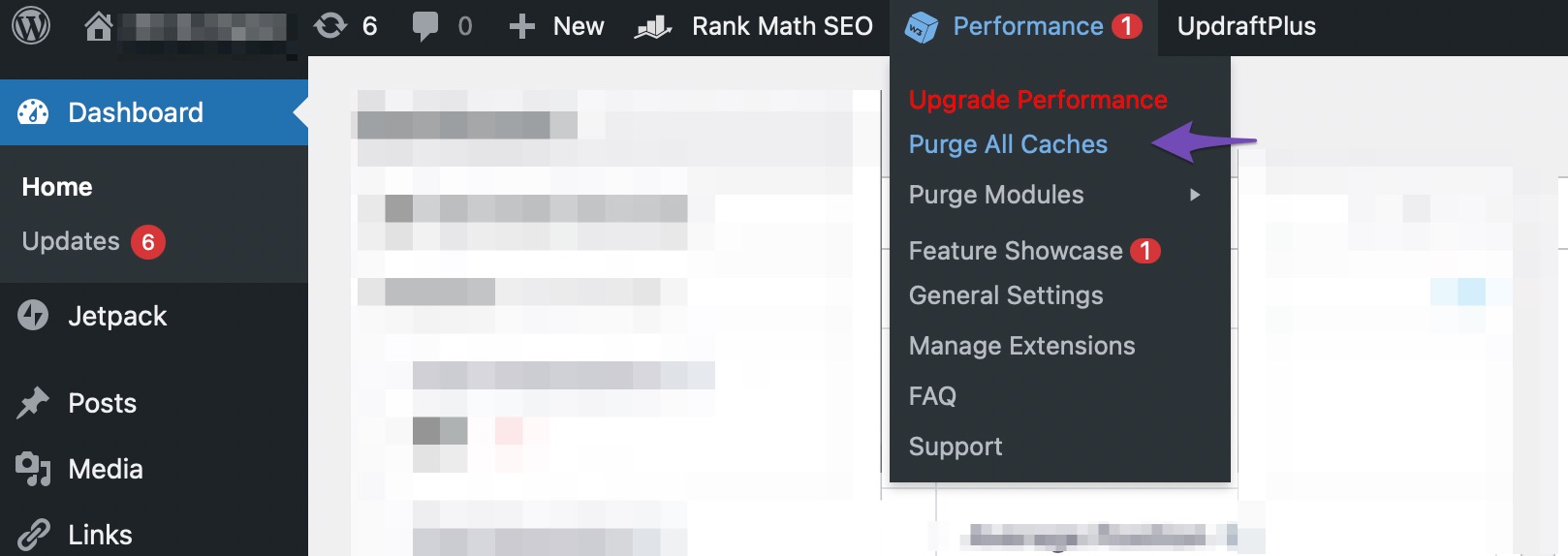
Doing so will clear your WordPress site cache and should resolve your issue.
5.3 Check Your HTTPS Settings
You can also double-check your HTTPS settings. The error notice ERR_TOO_MANY_REDIRECTS occurs many times when people have just finished migrating their WordPress site to HTTPS and either didn’t finish or set it up improperly.
You’ll instantly throw your WordPress site into a redirection loop if you force it to load over HTTPS without first installing an SSL certificate. Install an SSL certificate on your WordPress site to fix this.
5.4 Set Up Redirects Correctly
If clearing the cache and cookies on your site didn’t fix the problem, check if your redirects are set up correctly. Disable any redirect-related solutions you have installed to see if that solves the problem.
Redirects are important for SEO, but they must be used with care to retain the right structure. Rank Math’s powerful Redirect Manager lets you manage your redirects with ease.
Before creating your redirections, ensure that your Redirections module is enabled under WordPress Dashboard → Rank Math SEO. Once done, you’ll find Redirections in Rank Math’s sub-menu, as shown below.
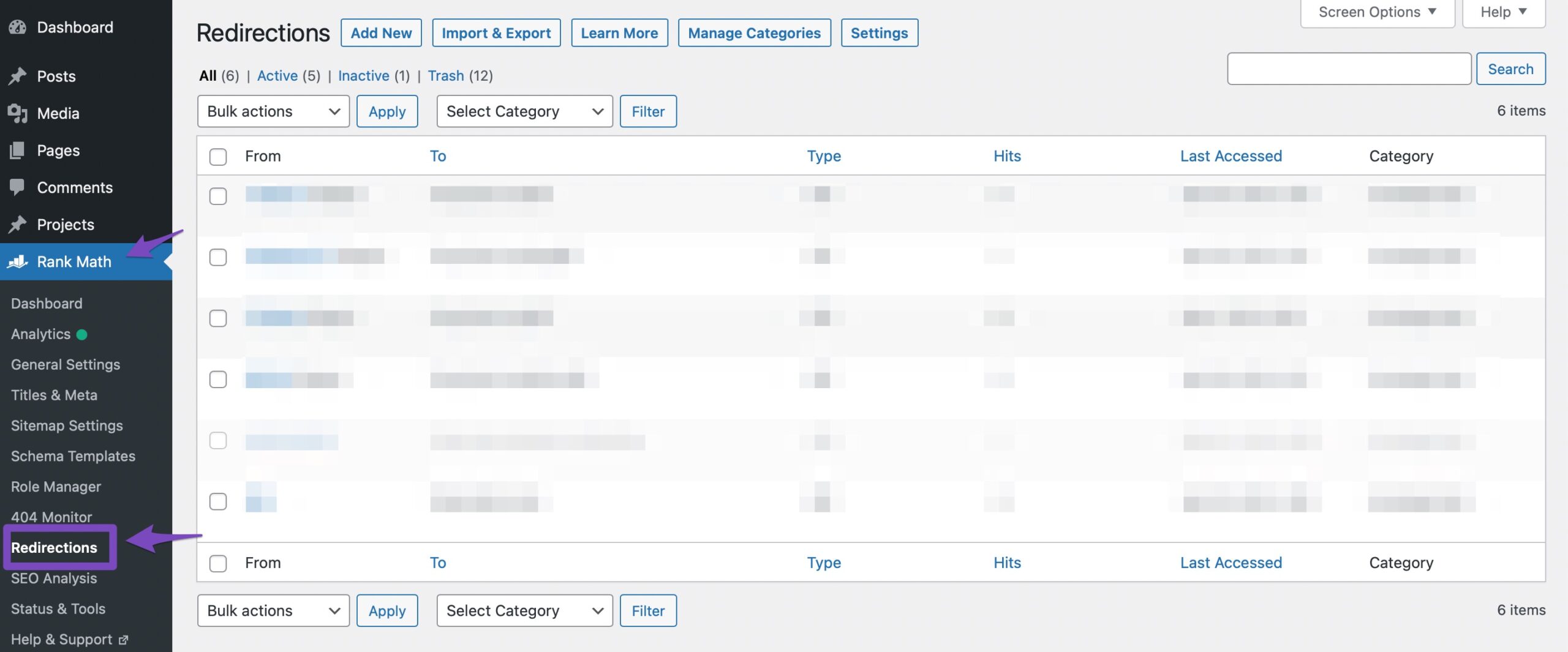
5.5 Restore .htaccess File
A redirect loop could be caused by specific changes to the hypertext access file or the .htaccess file. You’ll need to rename the file and create a new one in that instance by connecting your site using FTP. Select your .htaccess file from the File Manager. Then rename it .htaccess_old using a right-click.
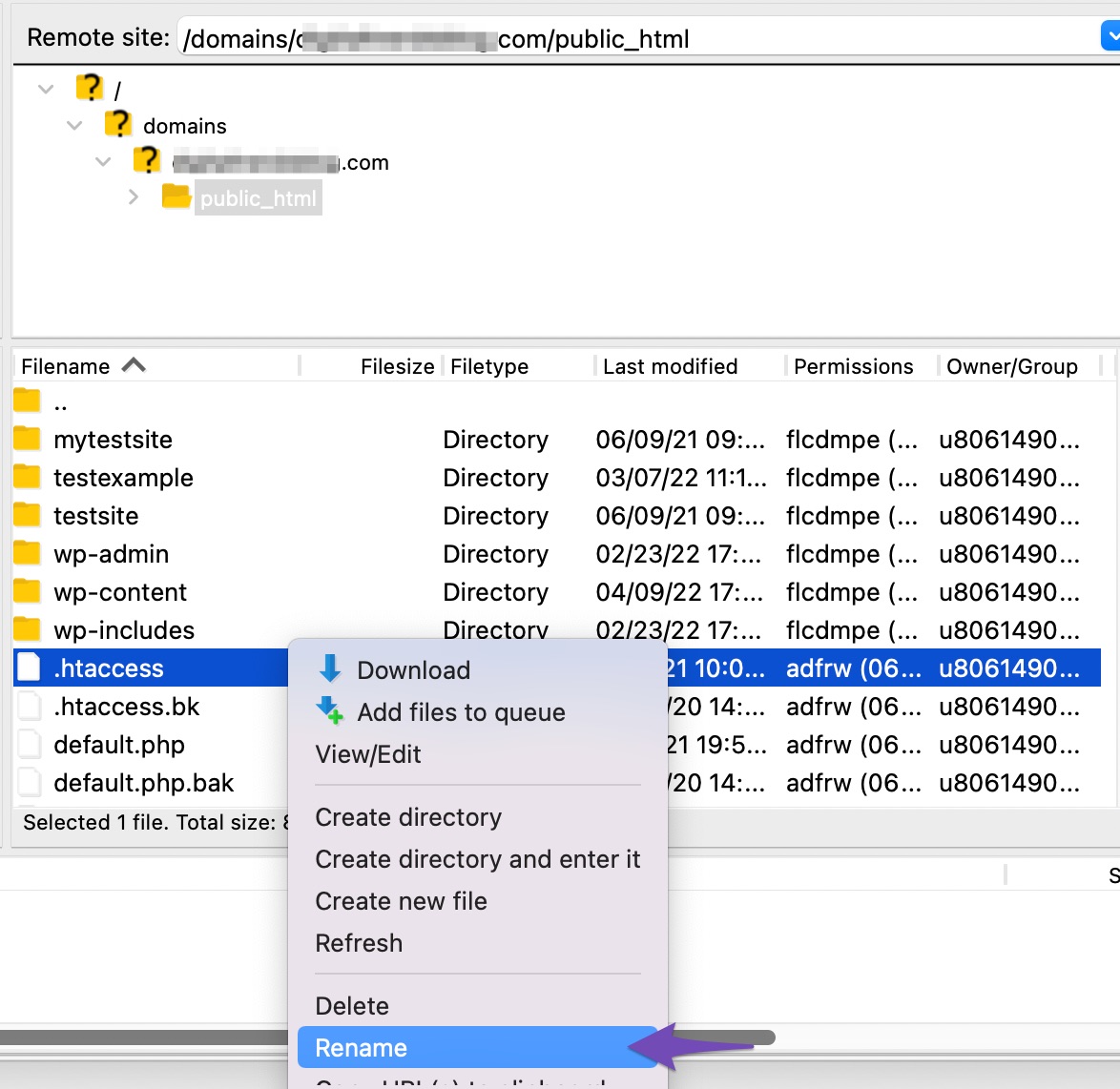
Now, navigate to public_html in File Manager. Create a new text file and name it .htaccess. Copy and paste the following code into the file.
# BEGIN WordPress
<IfModule mod_rewrite.c>
RewriteEngine On
RewriteBase /
RewriteRule ^index\.php$ - [L]
RewriteCond %{REQUEST_FILENAME} !-f
RewriteCond %{REQUEST_FILENAME} !-d
RewriteRule . /index.php [L]
</IfModule>
# END WordPressSave the changes and exit the File Manager.
5.6 Temporarily Disable WordPress Plugins
Because any incorrectly installed WordPress add-on might cause redirect issues, you might want to try immediately removing your other plugins. If the redirect problem goes away after you disable all of your plugins, it’s a clear clue that one of them is the cause.
As a result, the final step in troubleshooting is to try removing your plugins one by one. You can do this quickly and easily through the WordPress admin interface. But you may not be able to access the admin dashboard if there is a redirect error. You can log in to your site using the FTP protocol.
Once logged in, you’ll find all of your site’s plugins under a plugins folder. Rename the folder to anything else, such as “plugins [date],” to instantly disable it. Everything inside it will be disabled as a result of this.

If your site is now functional, one of your plugins is the cause of the redirect loop. To locate the cause, you’ll need to rename your plugins folder “plugins” and disable the plugins one by one, reloading your site after each one.
6 Conclusion
Dealing with a redirect loop error in WordPress can feel frustrating, especially when it blocks visitors and hurts your SEO. But with the right approach, fixing it is easier than it seems.
By carefully reviewing your redirect settings, clearing browser and site caches, and ensuring your URLs are properly aligned, you can quickly resolve the issue and get your site running smoothly again.
Remember: redirect loops usually happen due to simple misconfigurations. Once you identify the root cause, you can prevent them from happening in the future. Keep your redirects organized, use reliable tools or plugins, and regularly test your links.
With these steps, you’ll not only fix the ERR_TOO_MANY_REDIRECTS error but also keep your WordPress site healthy, user-friendly, and optimized for search engines.
If you like this post, then let us know by tweeting @rankmathseo. 💬
